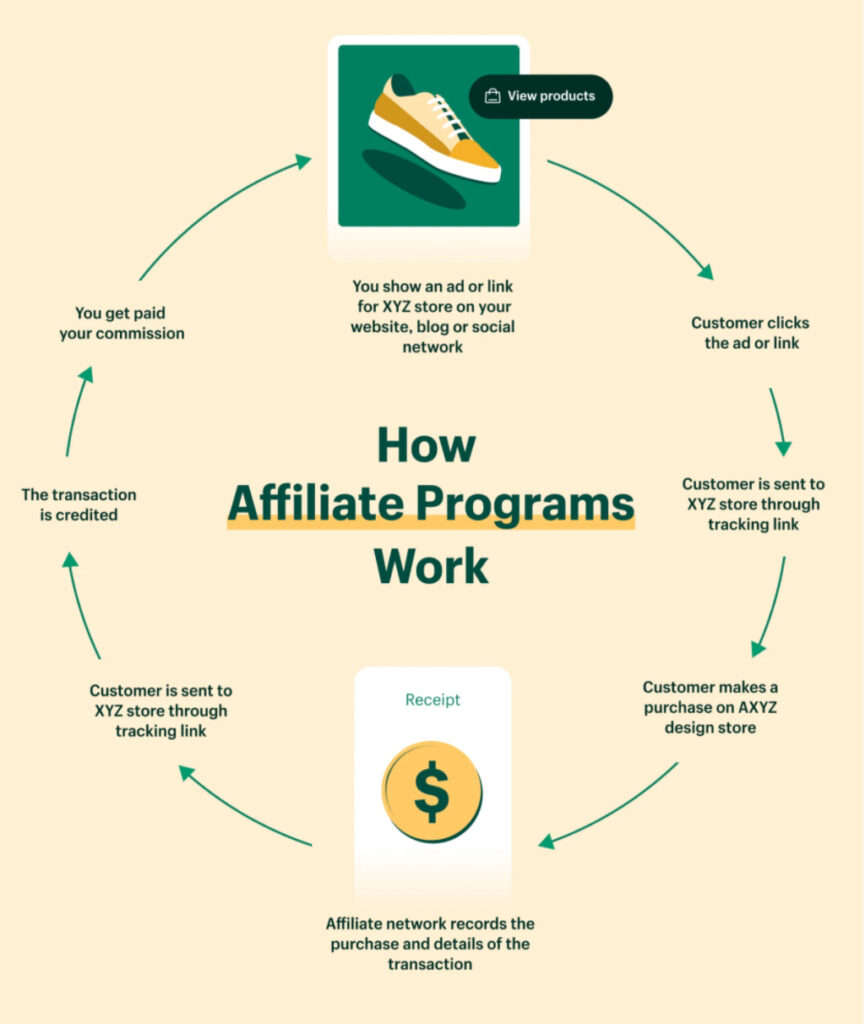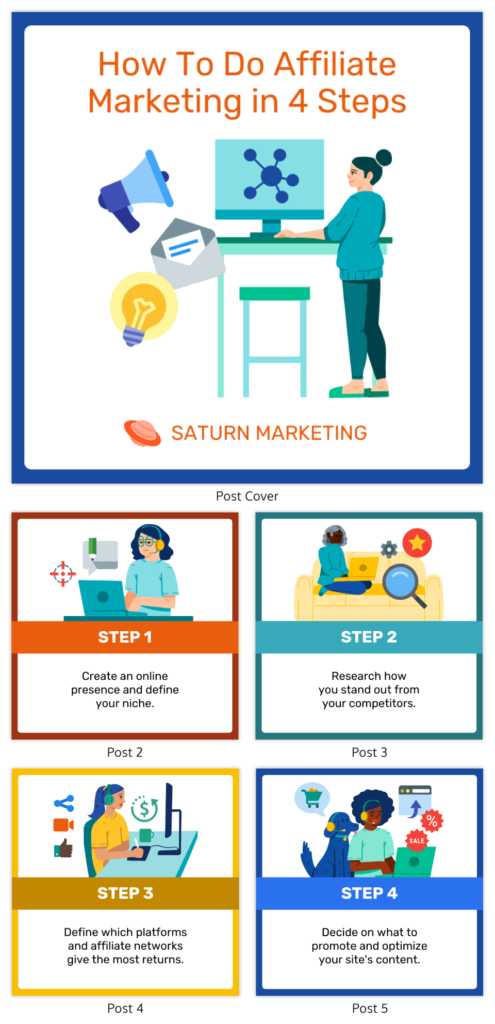
Are you ready to embark on a new journey in the world of online business? Look no further, because this article is your ultimate guide to getting started with affiliate marketing. Whether you’re a beginner or have some experience under your belt, we’re here to provide you with all the essential information you need to kickstart your affiliate marketing journey. From understanding the basics to finding the right affiliate programs, we’ve got you covered. So, get ready to learn the ropes and unlock the potential for success in the lucrative world of affiliate marketing.

Choosing a Niche
Do market research
When choosing a niche for your affiliate marketing venture, it’s important to conduct thorough market research. This involves studying the demand for products or services in different sectors and identifying potential gaps in the market. By understanding the needs and interests of consumers, you can select a niche that has the potential for growth and profitability.
Identify your interests and expertise
While it’s essential to choose a niche that is commercially viable, it’s also important to select a niche that aligns with your interests and expertise. By focusing on a niche that you are passionate about and knowledgeable in, you will not only enjoy the process of creating content but also establish yourself as an authoritative figure in that particular field. This will make it easier to attract and engage your target audience.
Consider the profitability of the niche
While passion and expertise are important, it’s also crucial to consider the profitability of the niche you choose. Some niches may have a high demand but low profit margins, while others may have a smaller audience but higher earnings potential. It’s important to strike a balance between your interests and the profitability of the niche. Look for niches that have a good balance of both to maximize your chances of success in affiliate marketing.
Selecting Affiliate Programs
Research different affiliate programs
Once you have selected your niche, it’s time to research different affiliate programs that are relevant to your niche. There are numerous affiliate networks and individual affiliate programs available, so it’s essential to do your due diligence and choose the ones that align with your niche and target audience.
Ensure they align with your niche and target audience
It’s crucial to select affiliate programs that align with your chosen niche and target audience. For example, if your niche is fitness, it wouldn’t make sense to promote affiliate programs for home improvement products. By choosing programs that are relevant to your niche, you increase the chances of conversions and earning commissions.
Evaluate the commission rates and payment terms
When selecting affiliate programs, it’s important to evaluate the commission rates and payment terms offered by different programs. Look for programs that offer competitive commission rates and have favorable payment terms, such as regular payouts or a low minimum threshold for withdrawals. Be sure to read the terms and conditions of each program carefully to understand the payment structure and any additional requirements.
Building a Website or Blog
Choose a domain name and register it
Building a website or blog is a fundamental step in establishing an online presence for your affiliate marketing business. Start by choosing a domain name that is relevant to your niche and easy to remember. Register the domain name through a reputable registrar to ensure that you have full ownership and control over it.
Select a suitable web hosting provider
After registering your domain name, you will need to choose a suitable web hosting provider. Look for a hosting plan that offers reliable performance, fast loading speeds, and good customer support. Consider the specific needs of your website, such as the amount of traffic you expect and the resources required for your content.
Design an appealing website layout
An appealing website layout is essential for capturing the interest and attention of your target audience. Design a layout that is visually appealing, easy to navigate, and aligns with the overall theme of your niche. Use color schemes and typography that are pleasing to the eye, and ensure that the website is responsive and accessible across different devices.
Optimize your website for search engines
Search engine optimization (SEO) is vital for driving organic traffic to your website. Optimize your website by incorporating relevant keywords, creating high-quality content, and optimizing meta tags and descriptions. Ensure that your website is user-friendly, loads quickly, and has proper internal linking. Utilize SEO best practices to improve your website’s visibility in search engine results.
Creating Quality Content
Understand your target audience’s needs and preferences
To create quality content that resonates with your target audience, it’s important to understand their needs and preferences. Conduct audience research to identify their pain points, aspirations, and interests. This will help you tailor your content to address their specific needs and provide value.
Develop a content strategy
A well-defined content strategy is crucial for consistently producing high-quality content. Plan the topics, formats, and publishing schedule for your content. This will help you stay organized and ensure that you consistently deliver valuable content to your audience. Consider the different types of content you can offer, such as articles, videos, and infographics, to cater to different learning preferences.
Produce informative and engaging content
When creating content, focus on providing valuable and engaging information to your audience. Offer insights, tips, and recommendations that help them solve their problems or achieve their goals. Use storytelling techniques to make your content more relatable and compelling. Incorporate visuals, such as images and videos, to enhance the overall experience for your audience.
Utilize various content formats (articles, videos, infographics)
Diversify your content by utilizing various formats such as articles, videos, and infographics. Different people have different preferences when it comes to consuming content, so offering a variety of formats will ensure that you cater to a wider audience. Experiment with different formats and identify which ones resonate best with your audience.

Driving Traffic to Your Site
Implement Search Engine Optimization (SEO) techniques
Driving organic traffic to your website is essential for a successful affiliate marketing business. Implement SEO techniques to improve your website’s visibility in search engine results. Optimize your content with relevant keywords, build quality backlinks, and ensure that your website is user-friendly and optimized for mobile devices.
Utilize social media platforms for promotion
Social media platforms provide a powerful means of promoting your affiliate marketing business and driving traffic to your website. Establish a presence on platforms that are popular among your target audience. Create compelling content that encourages engagement and sharing. Utilize social media ads and influencer collaborations to reach a wider audience.
Consider paid advertising options (Google Ads, Facebook Ads)
Paid advertising can be an effective method for driving targeted traffic to your website. Consider using platforms like Google Ads and Facebook Ads to reach your target audience and promote your affiliate products. Develop strategic ad campaigns that are optimized for conversions. Monitor and analyze the performance of your ads to continuously improve their effectiveness.
Build an email list for direct marketing
Building an email list is an invaluable asset for your affiliate marketing business. Offer incentives such as e-books, exclusive content, or discounts to encourage visitors to subscribe to your email list. Use email marketing tools to manage and automate your campaigns. Send regular newsletters, updates, and promotional offers to your subscribers to nurture the relationship and drive conversions.
Building an Email List
Create compelling opt-in forms and landing pages
Opt-in forms and landing pages play a crucial role in capturing email leads. Create compelling forms and landing pages that clearly communicate the value of subscribing to your email list. Use persuasive copywriting, attractive visuals, and a user-friendly interface to maximize conversions. Test different designs and placements to optimize your opt-in forms for better results.
Offer incentives (e-books, exclusive content) for subscriptions
People are more likely to subscribe to an email list if they receive something of value in return. Offer incentives such as e-books, exclusive content, or access to a members-only area of your website. This not only encourages sign-ups but also positions you as a trusted source of valuable information in your niche.
Use email marketing tools to manage and automate campaigns
Email marketing tools simplify the process of managing and automating your email campaigns. Use reputable email marketing software to create and send targeted emails to your subscribers. Segment your email list based on different criteria such as interests or purchase history to deliver personalized content. Monitor the performance of your campaigns and make adjustments based on open rates, click-through rates, and conversions.

Promoting Affiliate Products
Review and recommend products relevant to your niche
As an affiliate marketer, your role is to provide valuable recommendations to your audience regarding products or services that are relevant to your niche. Research and review products thoroughly, highlighting their features, benefits, and drawbacks. Provide honest and unbiased opinions to build trust with your audience.
Provide honest and genuine opinions
Authenticity and transparency are key in affiliate marketing. Provide honest and genuine opinions about the products you promote. Your audience trusts your recommendations, so it’s important to maintain integrity and only promote products that you genuinely believe in. This will help you establish credibility and foster long-term relationships with your audience.
Include affiliate links in content
Including affiliate links in your content is how you earn commissions. Embed these links strategically within your content, ensuring that they are relevant and naturally fit within the context. Use call-to-action phrases to encourage your audience to click on the links and make purchases. Disclose your use of affiliate links to maintain transparency with your audience.
Utilize banner ads and text links
In addition to embedding affiliate links within your content, you can also utilize banner ads and text links to promote affiliate products. Place banner ads in strategic locations on your website to capture the attention of your audience. Incorporate text links within relevant sections of your content to provide additional opportunities for conversions. Experiment with different ad placements and designs to optimize your click-through rates.
Tracking and Analyzing Performance
Implement tracking software (Google Analytics, affiliate network tools)
To track and analyze the performance of your affiliate marketing efforts, it’s essential to implement tracking software. Google Analytics is a powerful tool that provides insights into website traffic, user behavior, and conversions. Additionally, most affiliate networks offer tracking tools that allow you to monitor click-through rates, conversion rates, and earnings.
Monitor click-through rates and conversion rates
Monitoring click-through rates and conversion rates is crucial for assessing the effectiveness of your affiliate marketing campaigns. Analyze which links or calls-to-action are generating the highest click-through rates and which products are resulting in the most conversions. This information will help you make data-driven optimizations to improve the performance of your campaigns.
Analyze sales and revenue data
In addition to tracking click-through and conversion rates, it’s important to analyze sales and revenue data. Identify which affiliate products are generating the highest revenue and which marketing channels are driving the most sales. This data can help you understand the profitability of different campaigns and guide your decision-making when it comes to promoting affiliate products.
Make data-driven optimizations to improve performance
Based on the insights gained from tracking and analysis, make data-driven optimizations to improve the performance of your affiliate marketing campaigns. Experiment with different strategies, such as adjusting your content, refining your targeting, or optimizing your call-to-action phrases. Continuously monitor and evaluate the impact of these changes to refine and improve your overall performance.

Building Relationships with Affiliate Networks
Join affiliate networks (Amazon Associates, ClickBank)
To expand your affiliate marketing opportunities, join reputable affiliate networks such as Amazon Associates and ClickBank. These networks offer a wide range of affiliate programs across different niches. Joining affiliate networks allows you to access a broader selection of products and potentially earn higher commissions.
Communicate with affiliate managers for support and guidance
Building relationships with affiliate managers can provide valuable support and guidance for your affiliate marketing journey. Reach out to your affiliate managers to introduce yourself, ask questions, and seek advice. Affiliate managers often have access to additional resources and may offer personalized recommendations that can help you optimize your campaigns.
Attend industry conferences and events
Attending industry conferences and events is a great way to network with fellow affiliate marketers and connect with affiliate managers. These events often feature educational sessions and panel discussions that provide valuable insights and strategies for success. Networking with industry professionals can also lead to potential collaboration opportunities.
Collaborate with fellow affiliate marketers
Collaboration with fellow affiliate marketers can be mutually beneficial and help expand your reach. Consider partnering with other affiliates in your niche to create joint content, promote each other’s products, or cross-promote on social media. Sharing audiences and resources can lead to increased exposure and potentially attract new customers.
What Are the First Steps to Making Money with Affiliate Marketing?
Starting in affiliate marketing can be overwhelming, but with the right affiliate marketing guide, you can take the first steps towards making money. Begin by identifying a niche or industry that interests you. Next, research and join reputable affiliate programs relevant to your chosen niche. Create valuable content to attract and engage your target audience, and strategically include affiliate links. Consistency, patience, and continuous learning are key to achieving success in the world of affiliate marketing.
Is the Super Affiliate System a Good Program for Beginners?
The super affiliate system course review reveals that it is indeed a suitable program for beginners. With comprehensive training modules and step-by-step instructions, beginners can learn the ins and outs of affiliate marketing effectively. The course provides valuable insights, tools, and strategies to help beginners kickstart their online business journey and achieve success in the competitive affiliate marketing industry. Gain valuable knowledge and skills through the Super Affiliate System course review.
Continuous Learning and Adaptation
Stay updated with industry trends and changes
Affiliate marketing is a dynamic field that constantly evolves with changing trends and technologies. Stay updated with industry news and developments to remain competitive and relevant. Subscribe to newsletters, follow industry blogs and influencers, and participate in relevant forums to stay informed about the latest strategies and tactics.
Read affiliate marketing blogs and forums
Affiliate marketing blogs and forums are valuable resources for learning from experienced affiliate marketers and industry experts. These platforms often feature case studies, tips, and insights that can inspire and inform your own affiliate marketing strategies. Engage in discussions, ask questions, and share your experiences to contribute to the community and expand your knowledge.
Experiment with new strategies and techniques
In affiliate marketing, experimentation is key to discovering what works best for your niche and audience. Don’t be afraid to try new strategies and techniques to see how they perform. Test different marketing channels, promotional methods, and content formats to identify what resonates most with your audience and generates the best results.
Be willing to adjust your approach based on performance
Based on the data and insights gained from tracking and analyzing your performance, be willing to adjust your approach and make necessary changes. If certain strategies or campaigns are not yielding the desired results, don’t be afraid to modify or pivot your approach. Flexibility and adaptability are crucial traits for success in the ever-evolving world of affiliate marketing.
Remember, affiliate marketing requires dedication, persistence, and continuous learning. It may take time to see significant results, but with the right strategy and consistent effort, you can build a successful affiliate marketing business that generates passive income and allows you to pursue your passion. Good luck on your affiliate marketing journey!








